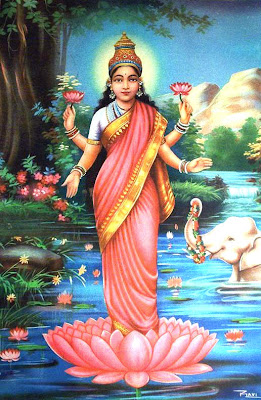Wisdom Quarterly Our protective Moon, a symbol of yin and their station in space, marks each figure.
Our protective Moon, a symbol of yin and their station in space, marks each figure.
Our Lady of G... the Virgin or Tonantzin?

The fame of the Virgin of Guadalupe [the Mahayana Buddhist
Guan Yin] rose rapidly after the Spanish Conquest and has continued to the present day. A small church was constructed on the spot [in Mexico] where the apparition first appeared [to Juan Diego]. In 1709, a larger church was erected on the site of the original sanctuary.

In 1745, the Vatican recognized Juan Diego's vision as a miracle and two new Basilicas were built, one in 1904, the present one in 1976. Today the shrine of Guadalupe in Mexico City has become one of the most famous sites in Christendom visited by millions of pilgrims annually.
 Guanyin, the Buddhist Virgin (a word that does not mean sex-less but virtuous), the Aztec goddess Tonantzin and Hindu Lakshmi (related to the historical Buddha's chief female disciple, Uppalavanna)
Guanyin, the Buddhist Virgin (a word that does not mean sex-less but virtuous), the Aztec goddess Tonantzin and Hindu Lakshmi (related to the historical Buddha's chief female disciple, Uppalavanna)
Aztec goddess?
However, there is another side to the story. Before the fall of the Aztec capital of Tenochtitlan in 1521, the hill where Juan Diego had his vision had also been the site of an ancient temple to the Aztec goddess Tonantzin ("Our Revered Mother"), later leveled to the ground by the Spaniards.
 According to the great Franciscan ethnographer Sahagun "Our Mother" Tonan was also known as Ilamatecuhtli (a noble old woman) and Cozcamiauh (a necklace of maize flowers).
According to the great Franciscan ethnographer Sahagun "Our Mother" Tonan was also known as Ilamatecuhtli (a noble old woman) and Cozcamiauh (a necklace of maize flowers).
Aztec deities [devas, extraterrestrial entities] could not only be of double gender, but different names represented different facets of the character of the same deity.
Tonantzin, therefore, may be associated with the dread goddess Cihuacoatl (a serpent [naga] woman), whom Sahagun identified not with the Virgin Mary [Jewish-Aramaic name Mariam, Miriyam], but with Our Mother Eve and her encounter with the serpent of good and evil in the Garden of Eden....
Accordingly, the ancient Aztec belief in Tonantzin and the Christian faith in the Virgin Mary are not necessarily contradictory.
 Christianity in Mexico has been described as Mesoamerican Catholicism, an inextricable blending of Pre-Hispanic religion with the symbols and tenets of Christianity.
Christianity in Mexico has been described as Mesoamerican Catholicism, an inextricable blending of Pre-Hispanic religion with the symbols and tenets of Christianity.
In the case of the Virgin of Guadalupe, the Indians in Mexico simply transferred their beliefs and practices from Tonantzin, the Goddess of the Earth, to Mary, the Mother of God.
In the process, the Indians also transformed the beliefs and practices of the Catholic Church to conform with and support their own Pre-Hispanic religion and world outlook. At least this is one point of view.
More>>Who is the Buddhist Goddess Guanyin?

Guan
Yin is known as one of the "Four Great
Bodhisattvas" (according to the Shambala Dictionary of Buddhism and Zen). She is an important element of Buddhism -- the personification of mercy and compassion. Ubiquitous in temples and iconography, she is venerated throughout Asia.
Also known as Kwan Yin, Quan Yin, Kwannon, and Kuan Shih Yin, the Goddess of Compassion and Healing is one of the most popular deities in all of Asia. Her name in Chinese roughly translates as "The One who Hears the Cries of the World."
 As in Christian-Catholicism, where she sometimes overshadows the founder of the religion, Guanyin is the most beloved and revered of all the Chinese deities. Guanyin is the Divine Mother longed for throughout the world: merciful, tender, compassionate, loving, protecting, caring, healing, and wise.
As in Christian-Catholicism, where she sometimes overshadows the founder of the religion, Guanyin is the most beloved and revered of all the Chinese deities. Guanyin is the Divine Mother longed for throughout the world: merciful, tender, compassionate, loving, protecting, caring, healing, and wise.
She quietly comes to the aid of her children everywhere. Some say her Sanskrit mantra is Om mani padme hum ("Hail the jewel in the lotus"). She is the female representation of Avalokita (Avalokiteshvara), the Tibetan and Nepalese God of Compassion.
Throughout Asia, statues of Guanyin are found in front and around many Buddhist temples. Just as Catholic-Christianity has provided an antidote to pure theological patriarchy by encouraging the reverence of the Virgin Mary, so Chinese Buddhism evolved a feminine bodhisattva (buddha-to-be) and called her Guanyin.
And just as Mary (or Guadalupe, the name of the place where she most famously appeared) captured the hearts of Catholic worshipers, so Guanyin far outstripped the male bodhisattvas in popularity.
Both in Japan (as Kwannon, often pictured as male because deities have the ability to appear as either) and in pre-revolutionary China, this semi-divine being was honored in virtually every home. She was the most powerful being in the entire Chinese pantheon.

Guanyin is depicted in various forms and poses. She always appears cloaked in white, the color of purity, and her gowns are long and flowing. She is often holding a rosary in one hand, a symbol of her devotion to Buddhism and its tenets. At times she is compassionately pouring healing water like the Hindu version of feminine divinity, Lakshmi (on lotus at left). Guanyin is sometimes depicted with a book (
The Lotus Sutra, which refers to her origins) in place of the vase.
At times, she might be holding a willow branch, which is a symbol of flexibility, bend or adapting without breaking. The willow is also used in shamanistic rituals and of course has medicinal properties as well. At other times, Guanyin is seen holding a child (Madonna with child, a favorite them in European art), a reminder of her role as the patron saint of barren women.
Another common form of Guanyin is with a thousand arms. An eye embedded in each palm or holding various symbolic objects. Her arms allow her to help stop the suffering of those around the world, while the thousand eyes help her see those in need. (There is a story of how she got a thousand arms).
Guanyin may also be seen standing with a peacock (a favorite Hindu theme in Indian art), since the spread tail feathers look as if they have eyes in them.
More>>IMAGES: 1. Guanyin Khasarpana Lokesvara (wikimedia.org), 2. Virgin Mary as European saint (wikimedia.org), 3. La Virgen de Guadalupe (mexconnect.com), 4. Mother Goddess or incarnation (avatar) of the Divine Feminine, the Queen of Heaven, a compassionate extraterrestrial interested in protecting Earthlings ("Mago," a divine asparva in Cottonwood, Arizona), 5. Mesoamerican goddess Tonantzin (gaytanartworks.com), 5. weeping murthi (idol) of the Catholic Blessed Virgin Mariam, Ave Maria (rawstory.com), 6. the Virgin Mary (Jewish, Mariam) as a westernized Kwan Yin (WQ), 7. cartoon Tonantzin as helmeted Aztec extraterrestrial in flowing garment (www2.gr.cl), 8. Hindu Goddess of Prosperity Lakshmi, conflated with the Buddhist saint Ven. Uppalavanna Theri (rtc-money.co.uk).
 Our protective Moon, a symbol of yin and their station in space, marks each figure.
Our protective Moon, a symbol of yin and their station in space, marks each figure. Guanyin, the Buddhist Virgin (a word that does not mean sex-less but virtuous), the Aztec goddess Tonantzin and Hindu Lakshmi (related to the historical Buddha's chief female disciple, Uppalavanna)
Guanyin, the Buddhist Virgin (a word that does not mean sex-less but virtuous), the Aztec goddess Tonantzin and Hindu Lakshmi (related to the historical Buddha's chief female disciple, Uppalavanna) According to the great Franciscan ethnographer Sahagun "Our Mother" Tonan was also known as Ilamatecuhtli (a noble old woman) and Cozcamiauh (a necklace of maize flowers).
According to the great Franciscan ethnographer Sahagun "Our Mother" Tonan was also known as Ilamatecuhtli (a noble old woman) and Cozcamiauh (a necklace of maize flowers).  Christianity in Mexico has been described as Mesoamerican Catholicism, an inextricable blending of Pre-Hispanic religion with the symbols and tenets of Christianity.
Christianity in Mexico has been described as Mesoamerican Catholicism, an inextricable blending of Pre-Hispanic religion with the symbols and tenets of Christianity. As in Christian-Catholicism, where she sometimes overshadows the founder of the religion, Guanyin is the most beloved and revered of all the Chinese deities. Guanyin is the Divine Mother longed for throughout the world: merciful, tender, compassionate, loving, protecting, caring, healing, and wise.
As in Christian-Catholicism, where she sometimes overshadows the founder of the religion, Guanyin is the most beloved and revered of all the Chinese deities. Guanyin is the Divine Mother longed for throughout the world: merciful, tender, compassionate, loving, protecting, caring, healing, and wise.  Guanyin is depicted in various forms and poses. She always appears cloaked in white, the color of purity, and her gowns are long and flowing. She is often holding a rosary in one hand, a symbol of her devotion to Buddhism and its tenets. At times she is compassionately pouring healing water like the Hindu version of feminine divinity, Lakshmi (on lotus at left). Guanyin is sometimes depicted with a book (The Lotus Sutra, which refers to her origins) in place of the vase.
Guanyin is depicted in various forms and poses. She always appears cloaked in white, the color of purity, and her gowns are long and flowing. She is often holding a rosary in one hand, a symbol of her devotion to Buddhism and its tenets. At times she is compassionately pouring healing water like the Hindu version of feminine divinity, Lakshmi (on lotus at left). Guanyin is sometimes depicted with a book (The Lotus Sutra, which refers to her origins) in place of the vase.
































































































































































































































No comments:
Post a Comment